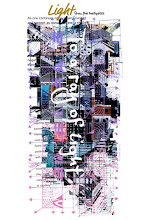Public works are planned and designed by the manufacturing department, and once the plan is consolidated, it must be approved by the head of the department. Next, the manufacturing department informs the head of the location where construction is needed. For instance, if it is a large-scale construction, it might be the third head who is informed. The third head, in consultation with the manufacturing department, decides how to allocate the work among the residents of that area and implements it. If the construction area is narrow but requires a large number of people, the surrounding town assemblies are also informed to assist.
The daily work hours should be kept as short as possible, between 1 to 4 hours, and it is better to operate on a shift system. Additionally, if some residents participate frequently and others have low participation rates, dissatisfaction may gradually accumulate among the proactive participants, leading to potential disputes. Therefore, the participants' working hours are recorded, and care is taken to ensure as fair a distribution of working hours as possible.
At Prout Village, the absence of poverty due to material abundance reduces the necessity of locking doors, leading to decreased crime rates. However, the initial decision to install locks is left to the residents' discretion.
During relocation, household belongings can be left behind for the next occupants to use. With the municipality's approval, anyone, including children, can live wherever and with whomever they choose.
For any renovations or new constructions, residents must approach the manufacturing department. This department, favoring a circular layout, determines the location within the area. Fences or barriers delineating building boundaries are not erected during housing construction, maintaining an open environment.
The design of the village ensures accessibility for wheelchair users, minimizing obstacles that require assistance. Steps are replaced with long slopes or equipped with elevators to accommodate those in need of help.
The positioning of roads, mountain paths, and buildings within the municipality prioritizes the needs of nature over humans. Therefore, the manufacturing department takes the lead in designing their locations, ensuring that large trees remain untouched. Along ground-level roads, efforts are made to minimize the creation of signals, road signs, fences, barriers, or guardrails, prioritizing nature. However, a road wide enough for large vehicles, like those used for disaster relief, to pass through is maintained until the neighboring municipality.
As a fundamental principle in road construction, blind spots like those at intersections are avoided. Consequently, the creation of municipalities with buildings at four corners is avoided from the outset. Additionally, there's an attempt to segregate pedestrian, bicycle, and vehicle roads as much as possible.
In areas like open fields where cars do not traverse, no paths are created, allowing people to freely choose their walking routes. With society free of litter, walking barefoot is feasible everywhere. As night falls, the lights in residences and along roads illuminate, designed as artistic lighting to enhance the nighttime scenery. However, lights in places that do not influence the visual improvement are equipped with sensors, turning on only when there's movement, while the rest of the time, they remain dark, allowing stars to be visible.
Concrete embankments along rivers are avoided as much as possible to maintain the natural landscape. Thus, the basic principle is to refrain from constructing buildings in areas prone to river overflow during heavy rainfall. By adhering to these common rules, only essential buildings and roads exist on the ground, leaving space for nature and wildlife to flourish.






0 コメント